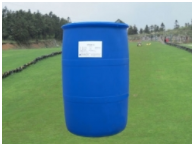Anionic surfactants have excellent performance in decontamination, but they are often combined with non-ionic surfactants to get better deinking effect. The anionic surfactants have good foaming and degreasing properties. The nonionic surfactants present nonionic state in aqueous solution and have high stability. When the non-ionic surfactant and the anionic surfactant are used together, the colloidal particles are negatively charged and repel with electricity, forming a stable dispersion system, which is conducive to the separation and removal of ink and fiber.
Compared with the blank sample, the whiteness of each deinked pulp after adding surfactant is improved to some extent, because after adding surfactant, its hydrophobic group will be combined with the ink, while one end of the hydrophilic group is still in the water, which changes the interface performance of the ink and makes it become a substance easy to dissolve in the water, that is to say, the surfactant is fully used to reduce the solution The functions of wetting, penetration, emulsification, dispersion and solubilization caused by the surface tension make the ink better separated from the fiber and dissolved in water.

Surfactants are very important for textile industry. It is the requirement of textile industry and the challenge of international competition to develop new surfactants and study the compounding of all kinds of surfactants at the same time of structural transformation of traditional alkyl glycoside surfactants. Only through continuous scientific research and innovation and participation in international competition can the surface activity of China be achieved Sex agent industry is in an invincible position, and then promote the healthy development of other related industries.
The softening effect of mineral oil and cationic surfactant is closely related to the hydrophobic group structure in the molecular chain. Some studies have shown that the soft effect of cetyl, octadecyl and octadecyl surfactants is far better than those with branched alkyl and alkenyl groups.
But these surfactants are not widely used in leather industry. It has been reported that APG and other surfactants (such as JFC, etc.) can be used as leathersoaking agent, leather degreaser, retanning filler, fatliquoring softener, dyeing and oiling agent. The application of these materials in leather production is beneficial to environmental protection and ecology.